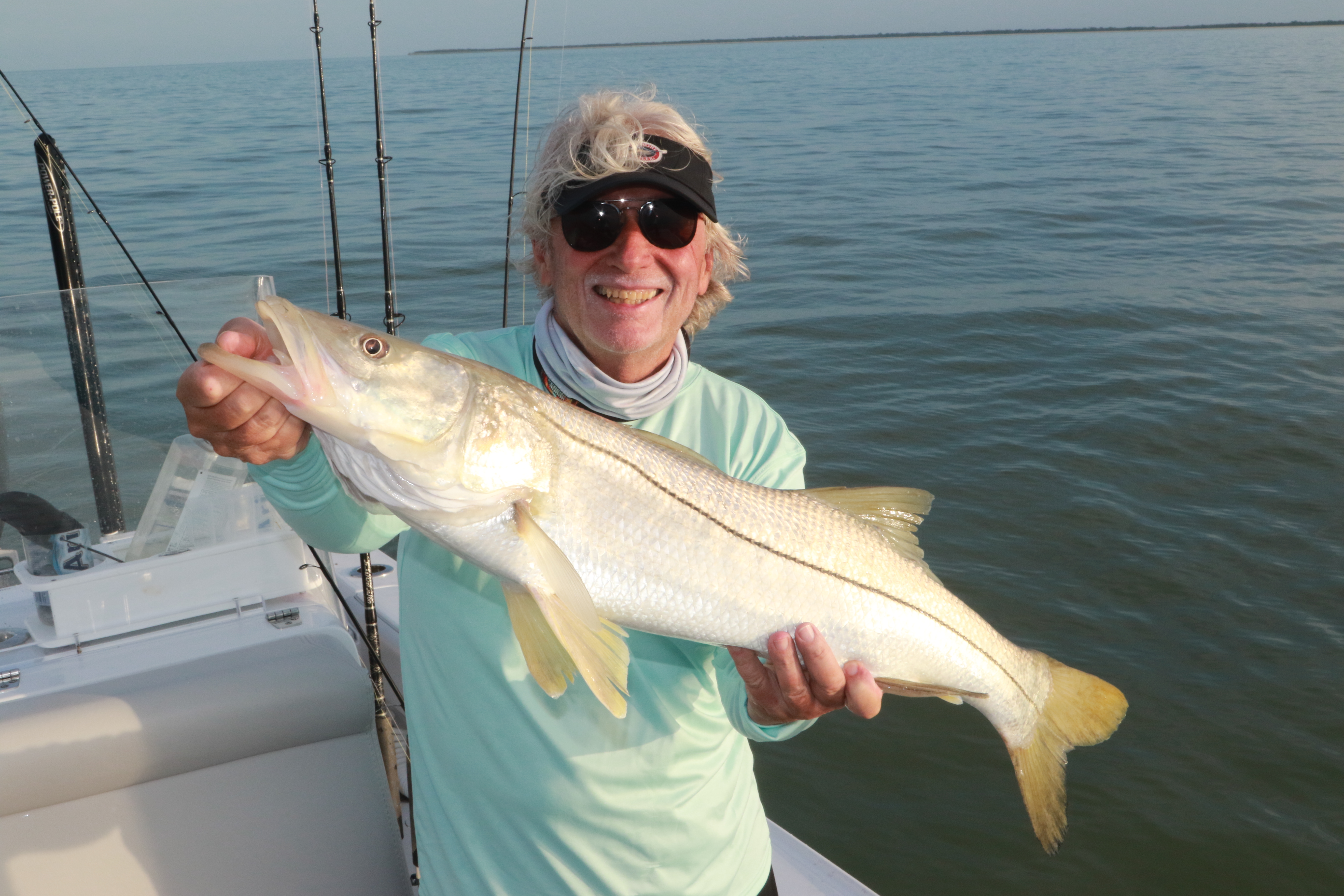
Shiny finish, black pin-striping, serious horsepower, and eye-catching appeal. Sounds like some you’d see at a high-end car dealer’s showroom floor, but we’re talking about something you’ll only find beyond terra firma.
Meet Centropomus undecimalis — the common snook. Arguably the premier Florida inshore sport fish, snook roam beaches, bays, estuaries, and rivers from the Everglades to Yankeetown (Gulf Coast) and Titusville (Atlantic Coast).
That racing stripe tracing the fish’s lateral line bespeaks a reel sizzling speed and stamina that’ll have you hoping you’ve spooled enough line. Along the way, amazing acrobatic leaps punctuate a spirited fight that’s well worth the price of admission.
And let’s not overlook the strike. Lacking teeth, snook use their strong, bony jaws to immobilize the prey with one quick, decisive chomp. Below the surface, that bite force is unmistakable; but when a snook bites near the surface, the frothy POP! shows they mean business.
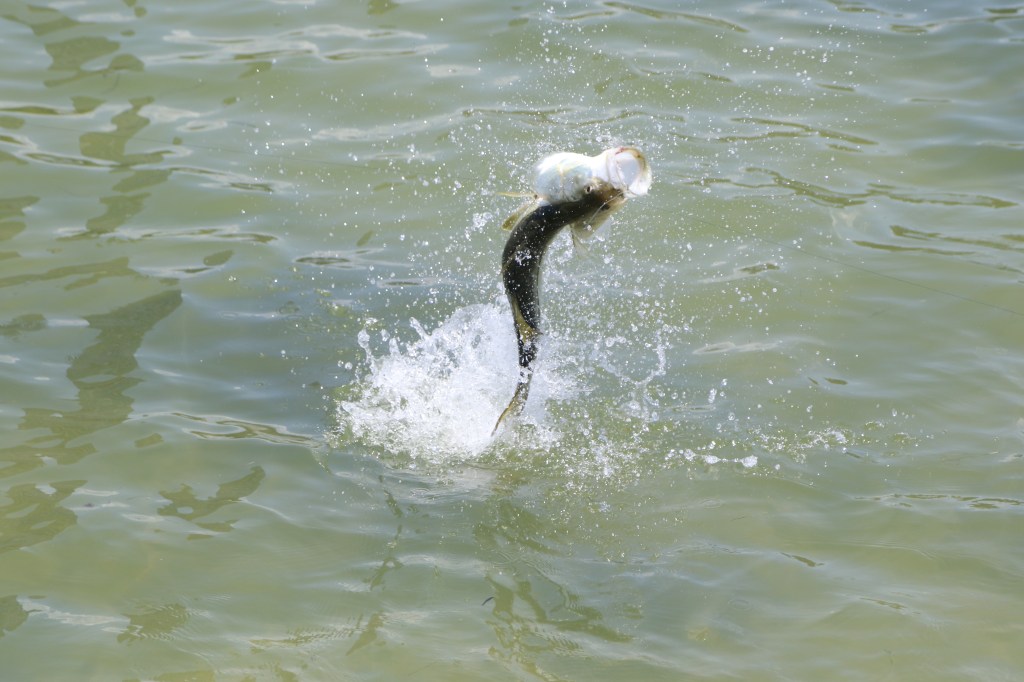
Snook Seasonality
While snook have expanded their range in the past decade, this remains a tropical/subtropical species with minimal tolerance for water temperatures below about 50 degrees. Warm weather brings out the beast in this fish and from the snook’s perspective, the hotter the better.
Extremely cold winters are rare for much of the Sunshine State — especially, the snook’s range. However, even mild years bring enough chill to their upper reaches to send the fish piling into coastal rivers (especially those with natural springs), deep harbors, and protected canals.
Snook spend their winters huddling in these warmer refuges with minimal feeding; but once spring’s warmth returns, the bite explodes. This typically coincides with the arrival of massive baitfish schools, which provide huge feeding opportunities for fish preparing for their spawn.
Hold on to this thought. We’ll get back to the baitfish thing in a moment.
Summer spawning season finds snook staging near major inlets, smaller coastal passes and along the edges of barrier islands. During the month’s strongest tides, typically coinciding with new and full moons, snook will spawn on the beaches where outgoing water carries their fertilized eggs into the nearshore waters.
Safe from concentrated predation, the eggs remain afloat for about 24-36 hours. After hatching larval snook make their way back to the inshore waters where they’ll hide amid sea grass, mangroves, and any cover they can find.
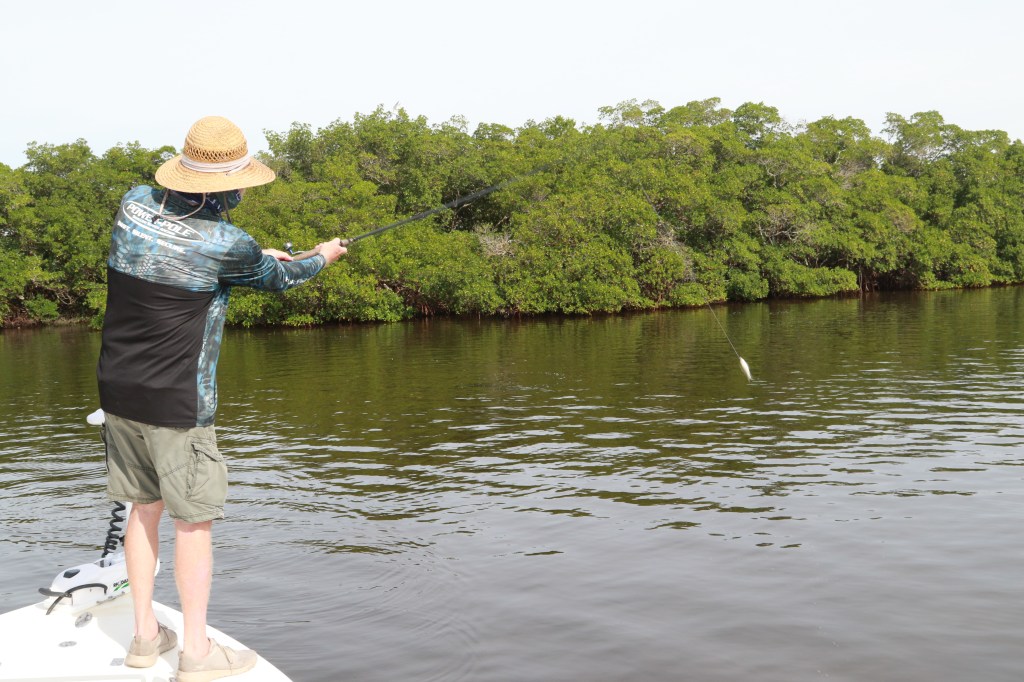
How to Tempt ‘Em
You’ll always find some no-it-all who swears snook bite on a dead slack water — and that is not incorrect. However, if you’re new to this pursuit, think of snook as tidal feeders and you’ll find greater consistency.
A couple things to consider: First, falling tides pull baitfish and crustaceans out of shallow water cover and concentrate snook in deeper perimeter areas. Conversely, rising tides allow predators more access to mangrove basins, small creeks, etc.
It’s really a matter of where you prefer fishing, but do not overlook this point: Yes, snook are top-shelf predators, but they’re also very smart fish. They can chase down a meal if they need to, but if they can sit in one spot and let the moving water bring food to their doorstep, they can feed more efficiently.
Live baits are best and the Florida assortment includes large shrimp, scaled sardines (aka “whitebait,” or “pilchards”), threadfin herring (“greenbacks”) killifish (“mud minnows”), pinfish, and juvenile “finger” mullet. Circle hooks in the 1/0-2/0 range are best, as they’re designed to pull into the corner of a fish’s mouth for secure connections that avoid the gut hooking that may occur when live baiting with standard J hooks.
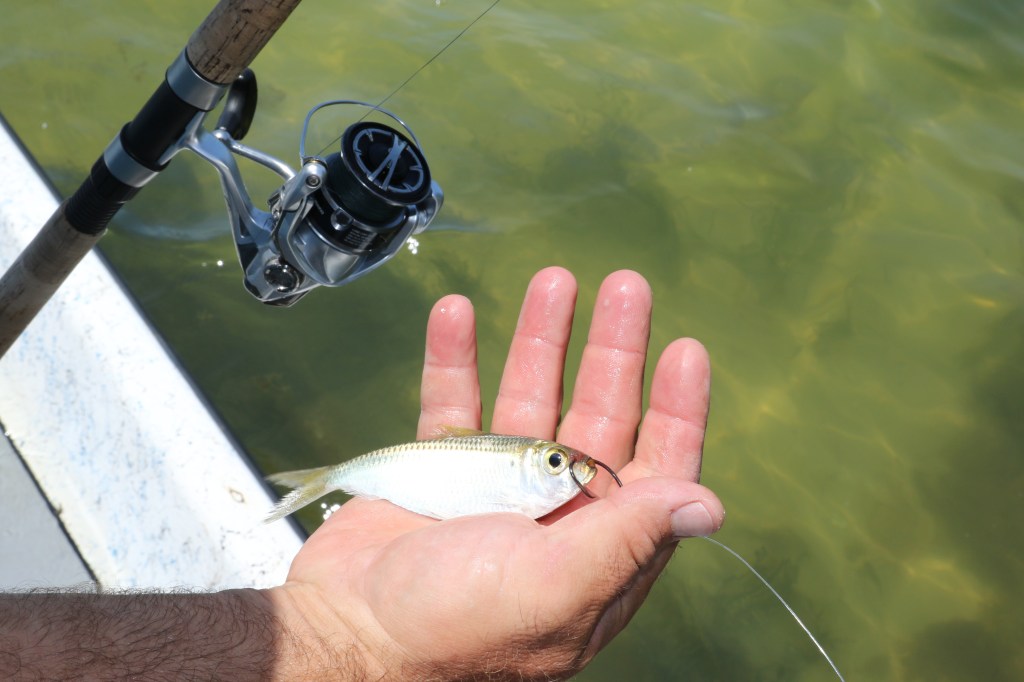
For broader target areas, free-lining live bait works well, but if you want to keep the bait in a more defined area — or to keep the bait from hiding in sea grass — fish it below a small cork. You can also utilize the cork’s flotation for a precise drift past a mangrove point, an attractive dock, or an oyster edge.
When multiple anglers are live baiting, using several cork colors helps keep everyone aware of bait positioning. This helps with strike detection and prevents line tangles.
If you like artificials, snook often smack topwater walking baits, light jigs with paddletail and jerkbait bodies and synthetic shrimp.
After Hours: Night fishing offers amazing opportunities for big snook action, as the fish leverage the darkness to feed. This strategy works best on the perimeters of dock, pier, and bridge lights where snook use shadow concealment to ambush shrimp and baitfish drifting across the illuminated area.
It might seem sensible to drop your bait right into the light, but that’s actually counterproductive. For one thing, it’s an unrealistic look; but more importantly, your bait has minimal stage time.
The best bet is to cast upcurrent of the light and let the tide pull your bait through the strike zone. This creates a longer, more natural presentation that allows snook time to spot the meal and react.
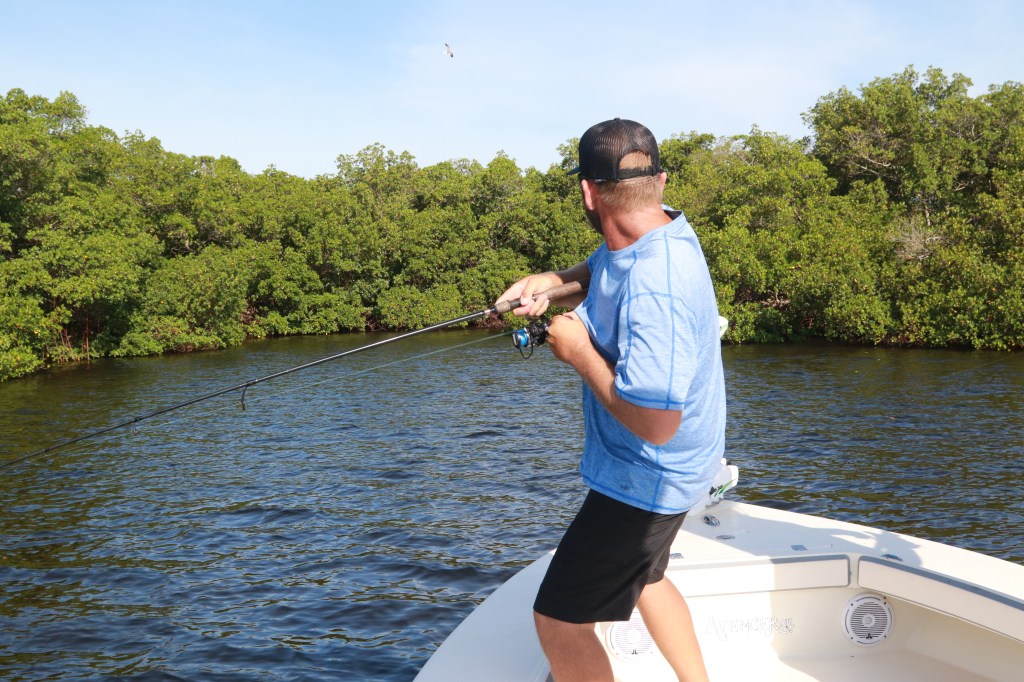
Fight Well
In any scenario, when a snook bites, there’s no confusion, no hesitation — they already have a dozen escape routes pre-planned and most revolve around using structure to secure their escape. Those mangrove roots grow in gnarly barnacle-encrusted tangles, while equally rough dock legs present effective break-off options.
Even in open water, savvy snook will find any rock, shell mound, or crab trap and make a hard turn around such line breakers. All this to say, there’s no finessing a snook. It’s a brutal slug fest that’ll test your resolve.
Success starts with the right tackle and that comes down to a balance of sporting fun and fish-whipping power. Experienced snookers have their preferences — and fly fishing definitely offers a memorable challenge — but standard snook armament comprises a 7- to 7 1/2-foot medium-heavy spinning outfit, a matching reel with a smooth drag system, 20- to 30-pound braided main line and 30- to 40-pound fluorocarbon leader.
On the bite, plant your feet, bend your knees and immediately get that rod tip high and angled away from the fish’s direction. The fish will instinctively head for cover/structure, so you have to break his will through sheer force.
Just like running from an alligator, you gotta win those first 10-20 seconds or it’s all over. (Sorry, but it’s true.)
Once you turn the snook into open water, maintain steady pressure, reel when the fish stops running and stay alert for a little trickery here and there. Snook love to run under the boat, so if this happens, stick your rod into the water to keep the line off the hull.

To Keep or Release?
The snook’s fighting abilities complement its fine table fare. Firm, light filets are sure to please even non-seafood lovers, whether fried, baked, or grilled.
No doubt, these are special fish deserving well-measured protection. Harvest season closes during the winter to prevent over harvesting when snook gather in large winter aggregations and again during the summer spawn. For open seasons and size/bag limit info visit myfwc.com/fishing/saltwater/recreational/snook.
The great part about snook fishing is that it’s just as fun catching the ones you have release as it is the ones you keep. Most anglers chose to give the fish a break during winter, as they’re just trying to survive and every calorie they expend fighting is a calorie they need to maintain their body temperature.
Spring through fall, these fish will give you all the fight you want, but consider how you might feel after a long run — probably need a little breather, right? Well, snook are no different, especially in summer’s taxing heat.
It’s not at bad with the little guys, as you can usually get them to the boat in about 30 seconds and then send them right on their way. Bigger fish usually take longer to subdue, so they’ll need a boat side rest to recharge their batteries.
Snook have razor sharp gill plates, so keep you hands away from this sensitive respiratory area. The stout, protruding lower jaw makes the ideal gripping point, so get a solid thumb grip here and use your other hand to support the fish in the water.
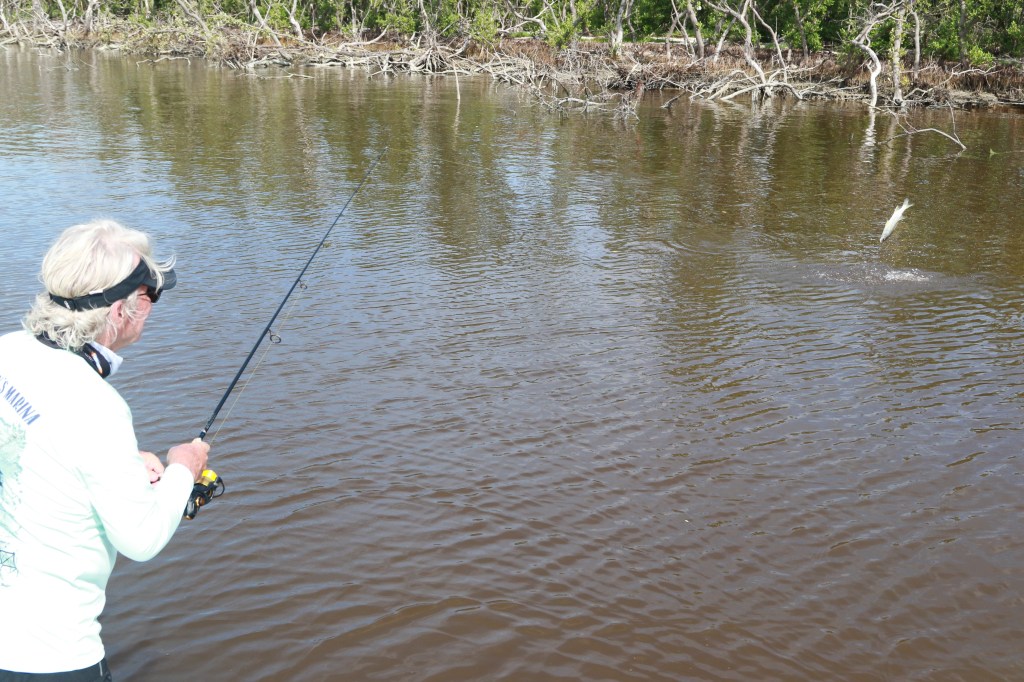
Cool thing with snook is that they’ll let you know when they’re ready to go. First thing you’ll feel is the fish’s toothless jaws squeezing your thumb. Second thing you’ll feel — a splash of water as this magnificent fish heads back to fight another day.




